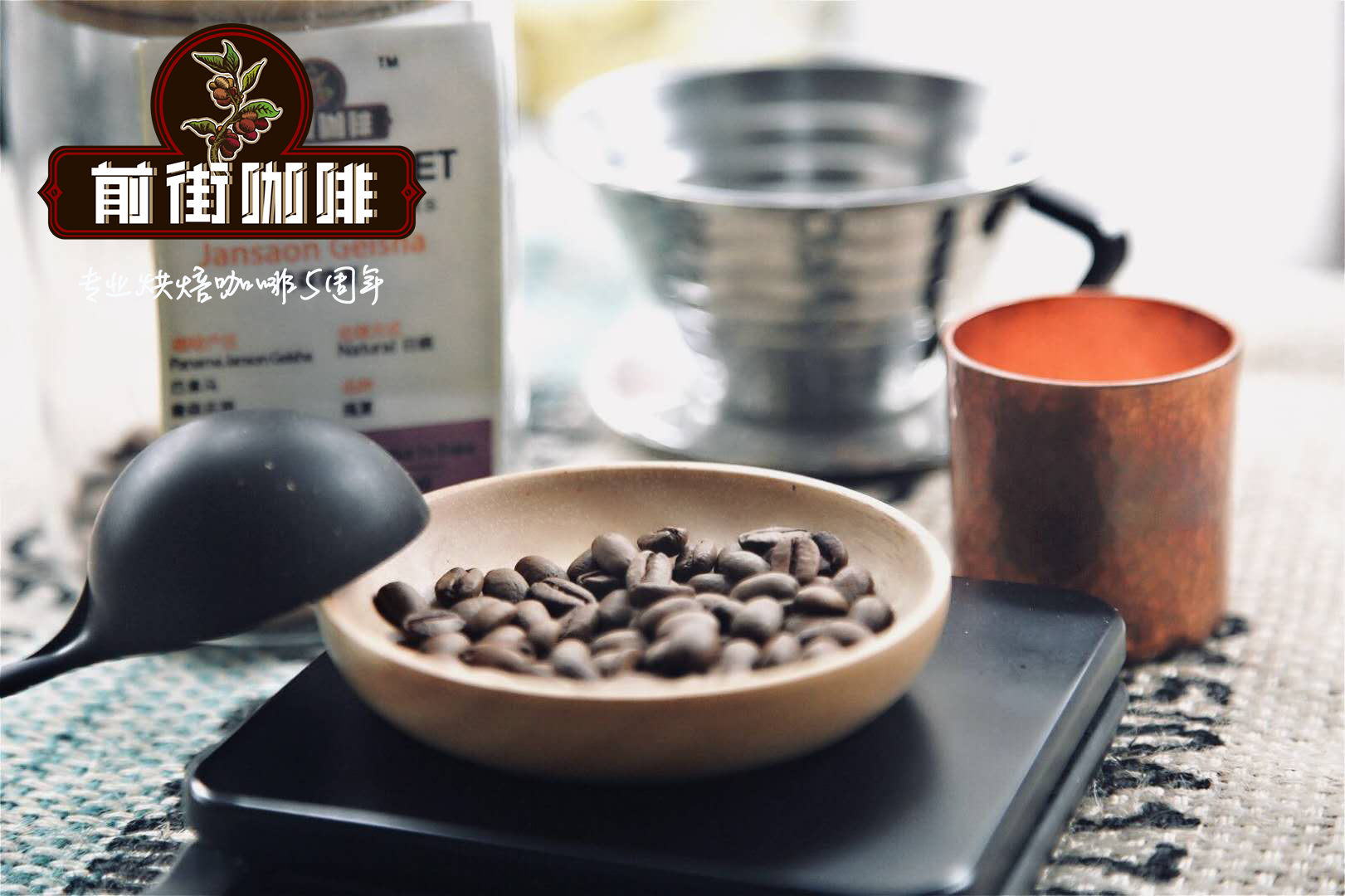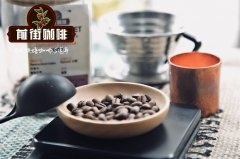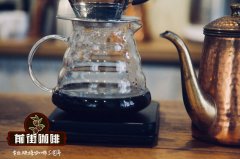Coffee grinding thickness, coffee consistency and flavor

Professional coffee knowledge exchange more coffee bean information please follow the coffee workshop (Wechat official account cafe_style)
The grinding thickness of hand-brewed coffee and Italian coffee is very important, which is related to how to improve the flavor of coffee, ensure the continuity of quality, test brewing parameters, and so on. Unfortunately, there are a lot of good coffee, all of which fail in the grinding step. Wrong thickness setting, inconsistent grinding quality, there are many factors may affect the coffee, in addition to making the coffee smelly sour, bitter taste, it can not be reproduced when it tastes good.
The author interviewed several experts: Mark, founder of the Kruve sieve brand, Miki Suzuki (Japanese coffee guru champion), Ben Put (Canadian coffee guru champion) and others, ways to reduce caking of coffee powder and ensure grinding consistency when grinding.
When making coffee by hand, the main goal is to control the extraction. The flavor of coffee depends on how many substances are dissolved from coffee beans into water. The balance of this part comes from the ratio of water to powder, brewing time, water temperature, grinding thickness and other factors.
The purpose of grinding is to increase the surface area of coffee beans in contact with water, the coarser the water is, the faster the water is, and the finer the water is, the slower the water is, so the grinding thickness affects the brewing time and extraction rate of coffee.
The thicker grinding will have a looser structure distribution, which will allow the water to pass through the coffee powder more quickly, and the fewer contact surfaces or the shorter cooking time will lead to the possibility of insufficient extraction (unless the immersion cooking method is used). On the other hand, the structure distribution of the finer grinding will be closer, which means that the longer the water passes through the coffee powder, and the more the contact surface of the powder will increase the extraction rate.
Is your coffee too sour to drink? It means that the degree of grinding is too rough to lead to sour taste, it is suggested that it can be ground a little finer. If the coffee is too bitter, it is recommended to grind it a little thicker. For the results caused by brewing, please refer to another translated article: "Coffee Brewing Collection". In addition, there are many other reasons that can help brewers understand whether the grinding thickness is correct.
What will affect the grinding thickness?
First of all, the author suggests that we should check whether the cooking formula is correct, which also includes the origin, variety, treatment and roasting degree of coffee beans. Brewers may want to emphasize a certain flavor, such as deep-roasted coffee, which is easier to dissolve, so thicker grinding may be used.
However, there are two things to pay attention to here.
The first is the "cooking method": different cooking utensils are suitable for different degrees of grinding. For example, French filter pots are usually made with rough grinding, most hand brews (except Chemex) use medium and fine grinding, espresso or Turkish pots use fine grinding or even very fine grinding, and some utensils, such as Philharmonic pressure, use a wide range of grinding.
Then there is "coffee freshness". We all hope that the beans at hand are fresh, but as the storage time is lengthened, we need to adjust the brewing formula, because the flavor of the coffee will gradually fade away because of the storage time. In this case, many brewers will grind it finer (to increase the extraction rate), while others adjust it (increase the concentration) by increasing the amount of powder and grinding a little thicker.
However, even if adjusting the grinding thickness can control the extraction of coffee, and then adjust the flavor of coffee, there are still many factors that make it very difficult.
What is the salt-like grinding thickness?
When many articles or books on cooking recipes talk about grinding thickness, they often say "salt-like thickness" or "fine sand thickness", but many people do not know the exact scope when they see these descriptive words, even if they probably know it, but they are not accurate. This may lead to the difficulty of reproducing the cooking results or adjusting the thickness.
In order to ensure the consistency of the grinding thickness, we need a common language to communicate. Sometimes we can adjust the settings of the bean grinder. For example, the Baratza Sette 30 bean grinder uses a number of 1-30 to distinguish the grinding degree, but this is not applicable to all bean grinders. And many hand bean grinders can only rotate the turntable without scale when adjusting the grinding degree, which means that you can not accurately reproduce the grinding degree.
Different bean grinders have different scales. In addition, the cutter head of the bean grinder will become blunt with use. Even two bean grinders of the same model may grind different thicknesses. In fact, the same bean grinder may grind different thicknesses of powder after a few months.
Of course, if the cooking formula requires you to use a different brand of bean grinder, these checks will be meaningless, because you are not sure which side is wrong.
The team tends to use microns to measure the degree of grinding, with screens ranging from 200 to 1600 microns. Team member Mark said, "Micron sieves provide us with great reference value and enable us to control the thickness," so that users can easily share the cooking formula, test it with different grinding thickness, and make adjustments and corrections in bean grinders in different stores.
Consistency of grinding machine in addition, no matter what kind of grinding machine you use, inconsistent grinding will be a problem. If the grinding powder is large or small (including coarse particles and fine powder), it will lead to the difference of extraction rate.
Usually larger particles of coffee powder will lead to insufficient extraction, while smaller particles will be overextracted, which will lead to unexpected extraction rates and confuse coffee flavor, which will prevent you from successfully completing the brewing formula, and so on.
In order to avoid this situation, many fastidious people will use high-quality bean grinders with cutters, but even high-priced bean grinders may have inconsistent grinding. When grinding coffee beans are more likely to be broken by a knife head than to crack neatly, so there may always be some problems with fine powder and coarse particles.
Mark said that when Kruve began the grinding refinement system, it was studying how often grinding inconsistencies occurred, using different screens to test household-to laboratory-grade bean grinders, which turned out to be at least 10 times thicker, making consistent grinding almost impossible.
Excluding bean grinders or cooking methods, this is why they actively provide supporting measures for home brewers to control grinding thickness. Mark is not the only one who thinks that sifting is important. Many coffee masters and brewing champions use this kind of equipment to help them brew.
Make sure the coffee powder is the same thickness.
In the pursuit of high-quality boutique coffee, do not underestimate any factors, set the correct and consistent grinding thickness, you can convey the flavor you want to show through the brewing formula. Experiment with different brewing factors, enjoy your coffee, and correct them each time you brew.
Important Notice :
前街咖啡 FrontStreet Coffee has moved to new addredd:
FrontStreet Coffee Address: 315,Donghua East Road,GuangZhou
Tel:020 38364473
- Prev

How to produce high-quality coffee and spiced coffee? Create high-quality coffee
Professional coffee knowledge exchange more coffee bean information please pay attention to the coffee workshop (Wechat official account cafe_style) high-quality coffee bean aroma and seasoning coffee how to produce? High-quality coffee beans, also known as boutique coffee, that is, non-general market commercial beans, it has a certain level of quality. In the world of coffee, there are many similarities with tea, and the emphasis is also similar to that of tea.
- Next

What is hand-brewed coffee? how to make hand-brewed coffee? what is the reason why hand-brewed coffee is not good?
Professional coffee knowledge exchange more coffee bean information please follow the coffee workshop (Wechat official account cafe_style) "I have been trying to make coffee at home for several months, change coffee machine, change beans, change water? I have tried all kinds of methods, but to no avail! The coffee brewed is not as mellow as the one I drank in the cafe. "do you have the same trouble?" It's not off.
Related
- Beginners will see the "Coffee pull flower" guide!
- What is the difference between ice blog purified milk and ordinary milk coffee?
- Why is the Philippines the largest producer of crops in Liberia?
- For coffee extraction, should the fine powder be retained?
- How does extracted espresso fill pressed powder? How much strength does it take to press the powder?
- How to make jasmine cold extract coffee? Is the jasmine + latte good?
- Will this little toy really make the coffee taste better? How does Lily Drip affect coffee extraction?
- Will the action of slapping the filter cup also affect coffee extraction?
- What's the difference between powder-to-water ratio and powder-to-liquid ratio?
- What is the Ethiopian local species? What does it have to do with Heirloom native species?

